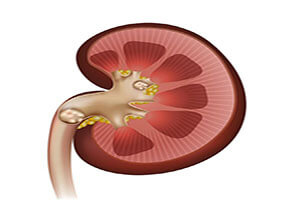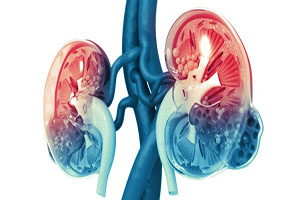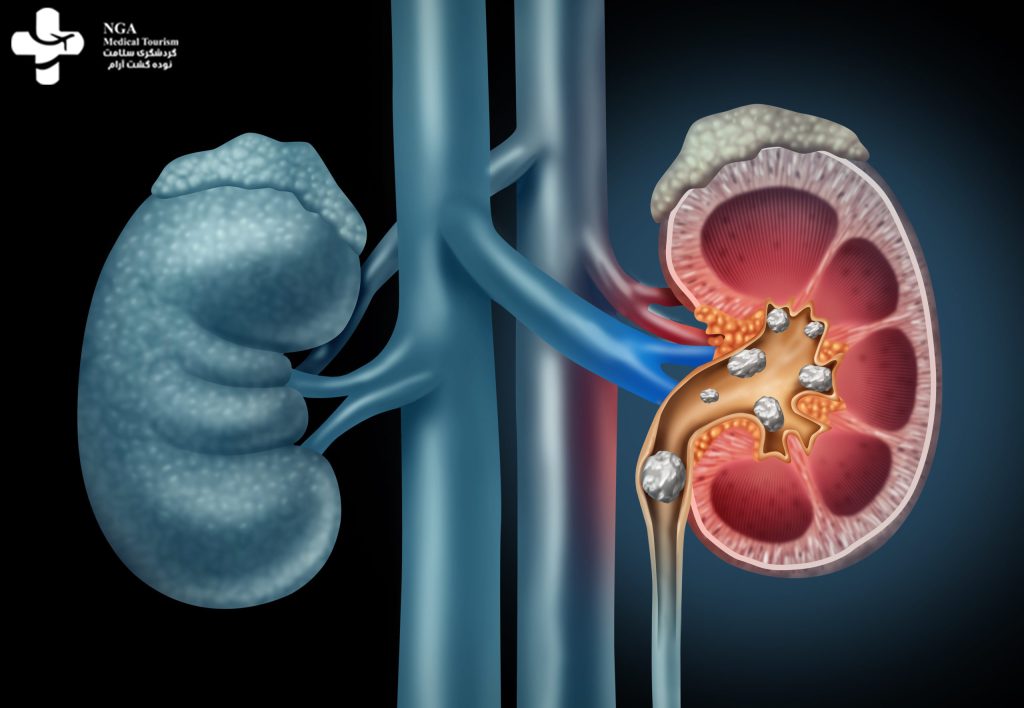All Departments
- Aortic valve stenosis (Aortic stenosis)
- arteriovenous malformations
- Avascular Necrosis
- Best cosmetic dentistry in Iran| Dental Treatment in Iran
- Breast Augmentation in Iran|Breast implant in iran
- Breast Reduction surgery
- Cancer in Iran: oncology in Iran
- Cardiology
- Cataract surgery in Iran
- Cochlear Implant Surgery in Iran
- Cosmetic Laser
- Cosmetic Surgery
- Ear cosmetic surgery
- Eye Care
- Eyelid surgery (Blepharoplasty)
- General Heart Surgery in Iran
- General surgery in Iran
- Glaucoma Treatment In Iran
- Hair Transplant
- Heart valve surgery
- lasik Eye Surgery
- Liposuction
- Non-Surgical Cosmetic procedures in iran
- Organ Transplantation in Iran
- Orthopedic
- Paget disease of bone
- Pediatrics
- Plastic surgery
- Psychiatry
- Radiology
- Rhinoplasty surgery in iran
- Shoulder Replacement Surgery
- SkinCare Treatment
- Spinal cord injury
- urolithiasis procedure in iran
- Urology
- Varicocelectomy
Opening Hours

urolithiasis procedure in iran
Urolithiasis refers to the presence of stones in the urinary tract, which can cause pain and discomfort and may require medical intervention. The specific procedure used to treat urolithiasis can vary depending on the size and location of the stones, as well as the individual’s overall health and medical history.

Kidney stones are hard mineral and salt deposits that form in the kidneys and can cause severe pain and urinary complications.

refers to a sudden and rapid loss of kidney function, often caused by factors such as dehydration, medication toxicity …

Kidney cysts are fluid-filled sacs that form in the kidneys and can vary in size, potentially leading to complications or…

refers to the abnormal and uncontrolled growth of cells in the kidneys, which can lead to the formation of tumors …
Some common procedures used to treat urolithiasis may include:
Extracorporeal shock wave lithotripsy (ESWL): This procedure uses shock waves to break up the stones in the urinary tract, making them easier to pass.
Ureteroscopy: This procedure involves the insertion of a small, flexible scope into the ureter to locate and remove the stones.
Percutaneous nephrolithotomy (PCNL): This procedure involves the insertion of a small scope through a small incision in the back to locate and remove the stones.
Open surgery: In rare cases, open surgery may be necessary to remove large or complex stones.
The choice of procedure will depend on the size, location, and number of stones, as well as the individual’s overall health and medical history. In some cases, a combination of procedures may be used to effectively treat urolithiasis.
After the procedure, patients may need to stay in the hospital for a period of time to recover. They may also need to take medications to manage pain and prevent infection, and follow-up appointments with their healthcare provider may be necessary to monitor their progress and ensure that the stones have been effectively removed.

kidney stone medical procedure
Kidney stones are hard deposits that form in the kidneys and can cause pain, discomfort, and other symptoms. The specific medical procedure used to treat kidney stones can depend on the size, location, and number of stones, as well as the individual’s overall health and medical history.

Some common medical procedures used to treat kidney stones may include:
1. Extracorporeal shock wave lithotripsy (ESWL): This procedure uses shock waves to break up the stones in the kidneys, making them easier to pass.
2. Ureteroscopy: This procedure involves the insertion of a small, flexible scope into the ureter to locate and remove the stones.
3. Percutaneous nephrolithotomy (PCNL): This procedure involves the insertion of a small scope through a small incision in the back to locate and remove the stones.
4. Open surgery: In rare cases, open surgery may be necessary to remove large or complex stones.
The choice of procedure will depend on the size, location, and number of stones, as well as the individual’s overall health and medical history. In some cases, a combination of procedures may be used to effectively treat kidney stones.
After the procedure, patients may need to stay in the hospital for a period of time to recover. They may also need to take medications to manage pain and prevent infection, and follow-up appointments with their healthcare provider may be necessary to monitor their progress and ensure that the stones have been effectively removed.
In addition to medical procedures, lifestyle changes such as drinking plenty of fluids, avoiding certain foods and drinks that can contribute to kidney stone formation, and taking medications as prescribed by a healthcare provider can help to prevent future kidney stone formation.
kidney stone blasting procedure
The kidney stone blasting procedure is also known as extracorporeal shock wave lithotripsy (ESWL). This procedure uses shock waves to break up kidney stones into smaller pieces, making them easier to pass through the urinary tract.
During the procedure, the patient lies on a table while a machine delivers shock waves to the kidney stones. The shock waves are generated outside the body and directed at the stones, causing them to break up into smaller pieces. The patient may be given medication to help manage pain and discomfort during the procedure.
After the procedure, the patient may need to stay in the hospital for a period of time to recover. They may also need to take medications to manage pain and prevent infection, and follow-up appointments with their healthcare provider may be necessary to monitor their progress and ensure that the stones have been effectively broken up.
ESWL is a non-invasive procedure that is generally considered safe and effective for treating kidney stones. However, the success of the procedure can depend on the size, location, and number of stones, as well as the individual’s overall health and medical history.
In addition to ESWL, other medical procedures such as ureteroscopy, percutaneous nephrolithotomy (PCNL), or open surgery may be necessary to treat larger or more complex kidney stones. Lifestyle changes such as drinking plenty of fluids, avoiding certain foods and drinks that can contribute to kidney stone formation, and taking medications as prescribed by a healthcare provider can also help to prevent future kidney stone formation.
urolithiasis
Urolithiasis is a medical condition characterized by the presence of stones in the urinary tract. These stones are typically made up of minerals and salts that have crystallized and formed hard deposits in the kidneys, ureters, bladder, or urethra.
Symptoms of urolithiasis can vary depending on the size and location of the stones, but may include:
– Pain or discomfort in the back, sides, or lower abdomen
– Painful or frequent urination
– Blood in the urine
– Nausea and vomiting
– Fever and chills
The specific treatment for urolithiasis can depend on the size, location, and number of stones, as well as the individual’s overall health and medical history. In some cases, small stones may be able to pass through the urinary tract on their own with the help of medications to manage pain and encourage the passing of the stone.
In other cases, medical procedures such as extracorporeal shock wave lithotripsy (ESWL), ureteroscopy, percutaneous nephrolithotomy (PCNL), or open surgery may be necessary to remove the stones. These procedures can involve the use of shock waves, scopes, or surgical tools to locate and remove the stones.
Prevention of urolithiasis can include drinking plenty of fluids, avoiding certain foods and drinks that can contribute to stone formation, and taking medications as prescribed by a healthcare provider. It is also important to manage other medical conditions that can contribute to the development of urolithiasis, such as high blood pressure, high cholesterol, and diabetes.
Overall, early detection and appropriate treatment are key to managing urolithiasis and preventing complications.

urolithiasis icd 10
The ICD-10 code for urolithiasis is N20. This code falls under the category of “Calculi of urinary tract” and is used to indicate a diagnosis of stones in the urinary tract, which can cause pain, discomfort, and other symptoms. The ICD-10 code is used by healthcare providers and insurance companies to help with billing and reimbursement for medical services related to the treatment of urolithiasis.
urolithiasis meaning
Urolithiasis is a medical term that refers to the presence of stones in the urinary tract. These stones, also called urinary tract stones or calculi, are hard deposits that form in the kidneys, ureters, bladder, or urethra. They are typically made up of minerals and salts that have crystallized and formed into solid structures.
Urolithiasis can cause a range of symptoms, including pain or discomfort in the back, sides, or lower abdomen, painful or frequent urination, blood in the urine, nausea and vomiting, and fever and chills. The severity of symptoms can vary depending on the size and location of the stones.
Treatment for urolithiasis may involve medications to manage pain and encourage the passing of the stones, as well as medical procedures such as extracorporeal shock wave lithotripsy (ESWL), ureteroscopy, percutaneous nephrolithotomy (PCNL), or open surgery to remove the stones. Prevention of urolithiasis can include drinking plenty of fluids, avoiding certain foods and drinks that can contribute to stone formation, and taking medications as prescribed by a healthcare provider.
Overall, early detection and appropriate treatment are key to managing urolithiasis and preventing complications.
6 millimeters kidney stones
A 6 millimeter kidney stone is considered a medium-sized stone. Depending on the location of the stone in the urinary tract and the individual’s overall health and medical history, treatment options may vary.
If the stone is small enough, it may be able to pass through the urinary tract on its own with the help of pain medication and drinking plenty of fluids to encourage the stone to pass. However, if the stone is too large or causing significant pain and discomfort, medical intervention may be necessary.
One common treatment for kidney stones is extracorporeal shock wave lithotripsy (ESWL), a non-invasive procedure that uses shock waves to break up the stone into smaller pieces that can be more easily passed through the urinary tract. Other treatment options may include ureteroscopy, percutaneous nephrolithotomy (PCNL), or open surgery in rare cases.
It is important to consult with a healthcare provider to determine the most appropriate treatment plan for a 6 millimeter kidney stone, as well as take steps to prevent future stones from forming. Drinking plenty of fluids, avoiding certain foods and drinks that can contribute to stone formation, and taking medications as prescribed by a healthcare provider can all help to prevent future kidney stone formation.

urolithiasis symptoms
Urolithiasis is a medical condition characterized by the presence of stones in the urinary tract. Depending on the size, location, and number of stones, symptoms of urolithiasis can vary. Some common symptoms of urolithiasis include:
1. Pain or discomfort in the back, sides, or lower abdomen
2. Painful or frequent urination
3. Blood in the urine
4. Nausea and vomiting
5. Fever and chills
6. Urinary tract infections (UTIs)
7. Difficulty passing urine
8. Urinary urgency or incontinence
The severity of symptoms can vary depending on the size and location of the stones. Small stones may not cause any symptoms and can pass through the urinary tract on their own, while larger stones may cause significant pain and discomfort and require medical intervention.
It is important to seek medical attention if you experience any symptoms of urolithiasis, as early detection and treatment can help to prevent complications. A healthcare provider can perform diagnostic tests to determine the presence and location of stones in the urinary tract and develop an appropriate treatment plan based on the individual’s overall health and medical history.
anti urolithiasis
Anti-urolithiasis refers to methods or substances that can help prevent the formation of urinary tract stones or reduce the risk of developing them. Some common anti-urolithiasis strategies include:
1. Drinking plenty of fluids: Staying well-hydrated can help dilute the urine and reduce the concentration of minerals and salts that can contribute to stone formation.
2. Dietary modifications: Avoiding foods that are high in oxalate, such as spinach, rhubarb, and chocolate, and reducing intake of animal protein can help reduce the risk of stone formation.
3. Medications: Certain medications, such as thiazide diuretics and allopurinol, may be prescribed to reduce the risk of stone formation in individuals who are at high risk.
4. Lifestyle modifications: Regular exercise and maintaining a healthy weight can help reduce the risk of stone formation.
5. Herbal remedies: Some herbs, such as chanca piedra and nettle leaf, have been traditionally used to prevent or treat urolithiasis. However, their effectiveness has not been well-studied.
Overall, preventing urolithiasis involves a combination of strategies, including staying well-hydrated, following a healthy diet, and taking medications as prescribed by a healthcare provider. It is important to consult with a healthcare provider to develop an individualized plan for preventing urolithiasis based on the individual’s overall health and medical history.
urolithiasis treatment
Treatment for urolithiasis depends on the size, location, and number of stones, as well as the individual’s overall health and medical history. The goal of treatment is to remove the stones and prevent complications.
1. Medical management: If the stones are small enough, they may pass through the urinary tract on their own with the help of pain medication and drinking plenty of fluids to encourage the stone to pass. Medications may also be prescribed to manage pain, nausea, and other symptoms.
2. Extracorporeal shock wave lithotripsy (ESWL): This is a non-invasive procedure that uses shock waves to break up the stone into smaller pieces that can be more easily passed through the urinary tract.
3. Ureteroscopy: This procedure involves the use of a small camera inserted through the urethra to locate the stone and a small instrument to remove the stone.
4. Percutaneous nephrolithotomy (PCNL): This procedure involves making a small incision in the back and using a small instrument to remove the stone.
5. Open surgery: In rare cases, open surgery may be necessary to remove the stones.
After treatment, follow-up appointments with a healthcare provider may be necessary to monitor the individual’s progress and ensure that the stones have been effectively treated.
Prevention of urolithiasis involves lifestyle modifications such as drinking plenty of fluids, following a healthy diet, and taking medications as prescribed by a healthcare provider. It is important to consult with a healthcare provider to determine the most appropriate treatment plan for urolithiasis and take steps to prevent future stones from forming.

kode icd 10 urolithiasis
The ICD-10 code for urolithiasis is N20. N20 falls under the category of “Calculi of urinary tract” and is used to indicate a diagnosis of stones in the urinary tract, which can cause pain, discomfort, and other symptoms. The ICD-10 code is used by healthcare providers and insurance companies to help with billing and reimbursement for medical services related to the treatment of urolithiasis.
a conclusion for urolithiasis procedure in iran
Urolithiasis is a common condition in Iran, with a prevalence rate that is higher than in many other countries. Several treatment options are available for urolithiasis in Iran, including medical management, shock wave lithotripsy, ureteroscopy, percutaneous nephrolithotomy, and open surgery. The choice of treatment depends on the size, location, and number of stones, as well as the individual’s overall health and medical history.
In recent years, there has been a growing trend towards the use of minimally invasive procedures for the treatment of urolithiasis in Iran. Ureteroscopy and shock wave lithotripsy are the most commonly used minimally invasive procedures for the treatment of urolithiasis in Iran. These procedures have been shown to be effective and safe, with high success rates and low complication rates.
Overall, the treatment of urolithiasis in Iran is generally of high quality, with modern medical facilities and well-trained healthcare professionals. However, as with any medical procedure, there is always some level of risk involved. It is important for individuals to consult with a healthcare provider to determine the most appropriate treatment plan for urolithiasis based on their individual needs and medical history.

SURGICAL OPTIONS — The most commonly used surgical procedures for stone removal are minimally invasive techniques such as shock wave lithotripsy (SWL), ureteroscopy (URS), and percutaneous nephrolithotomy (PNL). Other, less commonly performed, procedures include laparoscopic, robot-assisted, and open surgery.
In open surgery to remove kidney stones, the surgeon uses an incision in the person’s abdomen or side to reach the kidney and remove the stones. He or she then puts a small tube (catheter) near the kidney to drain urine until the kidney heals.
The larger a stone is, the less likely that it will pass without surgery. Surgical treatment is usually recommended for stones 0.5 centimeters in size and larger, as well as for patients who fail conservative management.
Most often ureteroscopy is used for stones in the ureter, especially for stones closest to the bladder, in the lower half of the ureter. lt is the most common treatment of lower ureteral stones. For stones in the kidney, shock wave lithotripsy (SWL) is the most common treatment.
This type of procedure is most often used for kidney stones that are less than two centimeters in size, for softer stones, and, sometimes, for those located in the ureter. Shockwave lithotripsy is typically performed as an outpatient procedure, allowing you to go home the same day.
Ureteroscopy. Percutaneous nephrolithotomy or percutaneous nephrolithotripsy. Open surgery.
There are four main types of kidney surgery: percutaneous nephrolithotomy and nephrolithotripsy, ureteroscopy, shockwave lithotripsy, and open surgery. Doctors only recommend open surgery when all other procedures are not suitable. Open surgery is the most invasive type of kidney stone surgery.
A small stone of size 6 mm or less, which is in the urinary tube (Ureter) not causing much of swelling of the kidney, can be managed medically. You will not require surgery but you have to be under medical supervision.

